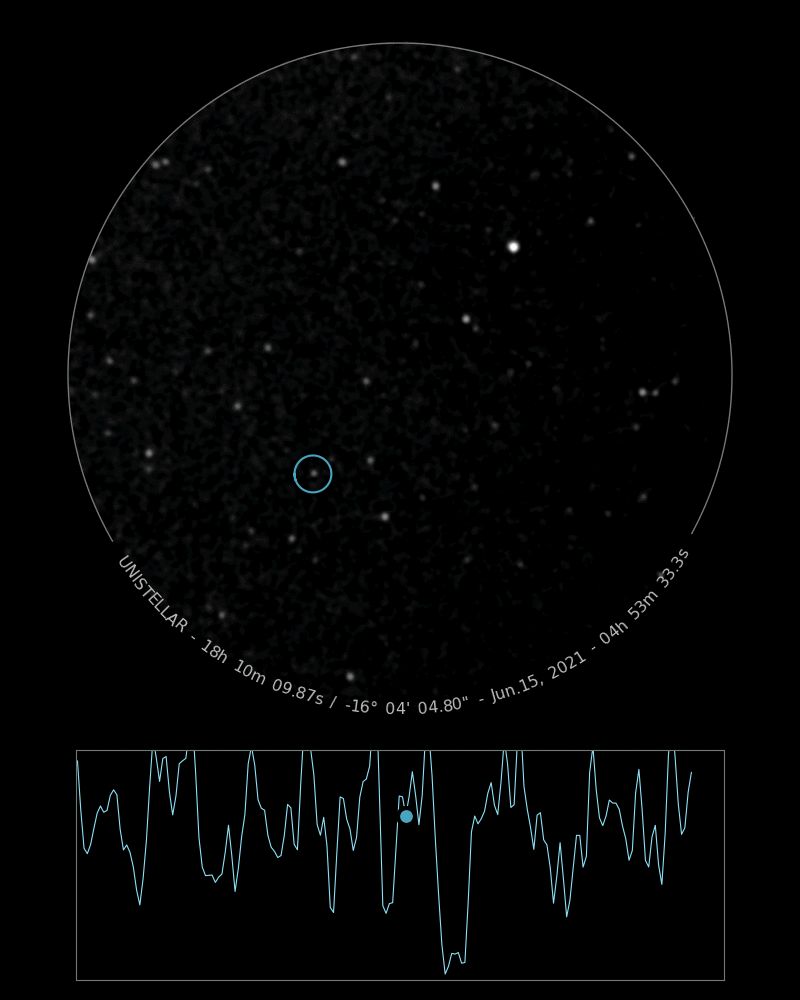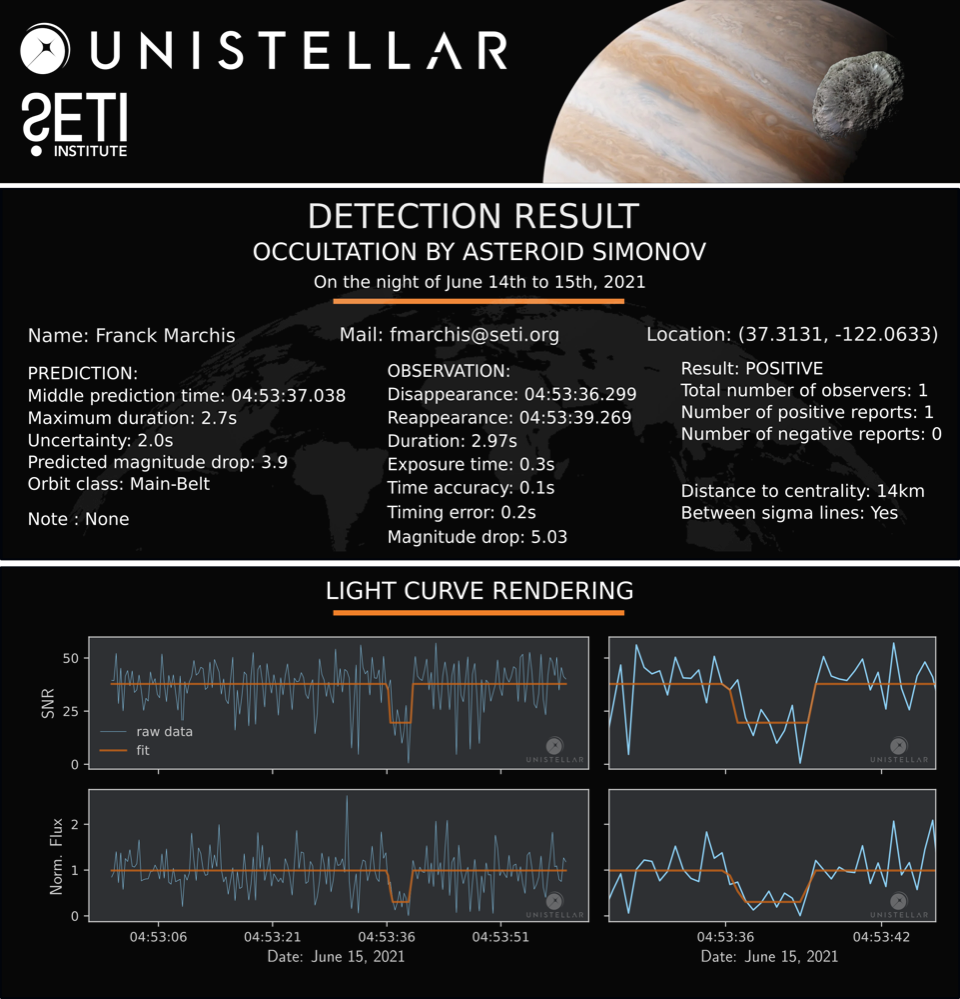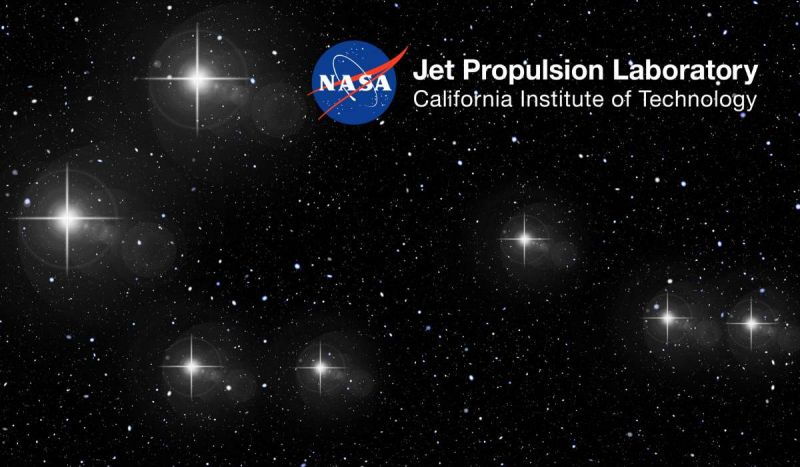
The SETI Institute's summer internship research program, which this year includes 13 Research Experience for Undergraduates (REU) students, and two STEM Teacher and Researcher (STAR) students, is underway at the SETI Institute and, in a couple of cases, virtually. And two students, Yuki Matsumura from CalPoly and Peter Santana-Rodriguez from the University of Puerto Rico, have already had the opportunity to observe an asteroid occultation.
An occultation is when an object, such as a planet, moon or asteroid, passes in front of another object (such as a star), blocking the view of whatever is behind it. On June 14, 2021, the main-belt asteroid 2426 Simonov was predicted to occult a 10-mag star and cast its shadow above the Bay Area of California. Shortly before 10 pm PDT, the students and their mentor, Dr. Franck Marchis, traveled throughout the Bay Area to capture the nearly 1.5-second occultation. While observing, they saw this event live, and after processing their data, a positive detection was confirmed!
The REU program at the SETI Institute has been running since 2006 and is for highly motivated students interested in astronomy, astrobiology and planetary science. They work with scientists at the SETI Institute and NASA Ames Research Center on microbiology, planetary geology, observational astronomy and SETI.
This summer, Marchis and his students will be conducting scientific investigations of comets and active asteroids, and studying exoplanets by transit with the Unistellar’s eVscope network. The network consists of approximately 5,000 digital telescopes that allow citizen astronomers to observe the universe from almost any place on Earth, including areas such as light-polluted cities. The students process and analyze the data collected by network members worldwide and work with them to facilitate the experiments they are conducting.
“As usual with occultation, this observation was an adventure. We quickly realized that we would not be able to observe the event from the SETI Institute parking lot because of the limited visibility, so we drove toward Cupertino and tried to find a good spot,” said Marchis. “We got kicked out from the spot we had identified on the map, so we improvised and found a spot at McClellan Ranch Preserve a half hour before the event. If a few minutes, so students had set up the eVscope, and we were ready. We saw the star disappearing almost at the predicted time, so we quickly realized that we had been successful. Despite the long day, the spirit on the way back home was really positive, and I am sure the students will remember this scientific adventure.”
The next step will consist of gathering any additional observations from other telescopes and estimate the size and shape of this ~50km main-belt asteroid. The Unistellar SETI Institute team is already planning more occultation events in the Bay Area to involve REU students and citizen astronomers who have an eVscope.
The students will participate in several observation events throughout the summer and collaborate with Marchis on any papers that announce their discoveries.







